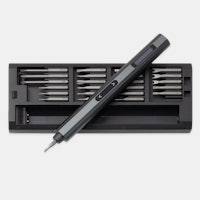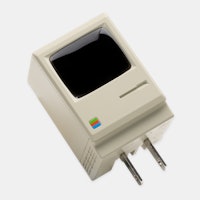Click to view our Accessibility Statement or contact us with accessibility-related questions


PRODUCTS YOU MAY LIKE
Trending Posts in More Community Picks

Graham88
Completely surprised by the lack of blade diversity here on Drop...
I’ve been a collector of Blades since before my teens, and a retailer coming up on 15… or maybe 20 years. Drop has really been kind of an interesting experience for me, because I do occasionally get to see some unusual tech and sometimes EDC items that otherwise I might not have been aware of. And maybe it’s because I have a deep love of cutlery and bladed weapons, but I find myself trolling through the site looking at it what’s available; and it’s just it’s pretty much the same. And the bladed community here is just always confused me.. every single knife is about the same, they’re almost all drop points and although the handle materials change and brands change.. it’s really just the same knife over and over and over again... occasionally you’ll see a tanto or a slight variant; but rarely… and almost never a serrated blade. And I’m just deeply amazed at this diversion of serrated blades. And I’m just surprised there isn’t more of a request for diversity here.... and I...
Mar 12, 2020
JellyDPhoto
Can we get Sony E-Mount or other mirrorless camera options please..
Would be nice to see some Sony E mount full frame cameras on here. I currently shoot with a A99 and they killed the lense path for better or more option lenses and now is all E-Mount. 🤔
Jan 13, 2020
RayF
There Are Pandas, and Then There Are Pandas.
And this isn't either of them! The Pandas we're talking about here, are watches, not bears. And what got me thinking about them (again) was a link posted this morning by @cm.rook who pointed a few of us to the very attractive (and not terribly priced) Yema "Rallygraph" Panda which, in it's most traditional arrangement, looks like the one on the left, but can also be had in the version on the right: The model on the left is a true Panda, while the model on the right is called a reverse Panda. The reason for that distinction is clear--Panda bears, only come in the first arrangement. Now at this point, everyone should be thinking about the most well-know Panda, The Rolex Panda, which is actually a Daytona, and among Rolex Daytonas, the most famous of which is the Paul Newman Daytona, which was famous first, because it was Paul's, and second because it sold at auction for $17.8 million (US Dollars). The story of that auction is well-known so I'll only...
Nov 8, 2019





(Academic interest only, I don't own a pour-over. I do own a drip machine, but it actually gets about 99% of its use making loose-leaf tea, not brewing coffee.)
I own a Chemex and having the freedom to control all the variables is really quite important. It lets you over time zone in on exactly the perfect brewing method for the perfect cup for you specifically.
Have to ask about your Rancilio. I came very close to buying either that or the Gaggia Classic. Ended up buying neither and went with a Breville. Love the Breville but I went with it purely because it was the cheapest. I think my first choice would really have been the Rancilio.
Let's say that you wake up one morning to find Rancilio vanished. It is just gone. Would you start researching tons of espresso machines or without a second thought get another Rancilio?
The one thing that I preferred about the Gaggia relative to the Rancilio was being able to visually see the water level in the tank, but in every other respect the Rancilio is better. It makes better coffee, has a better steam wand, draws less power, and has a brass boiler instead of aluminum. The reason I bought the Gaggia in the first place was because the founder and president of a company I had worked for brought his old Gaggia into the break room at work when he bought himself a new one, but by the time mine wore out I'd become aware of its limitations. I would definitely go with the Rancilio Silvia V3 over the Gaggia Classic; it's more expensive, yes, but it's enough better to make it a better value for the money.
If I woke up tomorrow and the Rancilio was gone? I think I'd take a lot of convincing not to replace it with another the same, UNLESS I decided to look at one of the fully automatic machines. But I've never been really sure whether I want to go that route or not. There are some utterly gorgeous steampunk works of art out there, and if someone handed me a blank check for the replacement, I might consider one. But on my own budget? It would most likely be another Rancilio.
So, the ability to control the bloom and interact with it. The where you target your pour to break up grounds and release the CO2 within it. The way you maximize the coverage of the extraction. For me the 2nd vs 3rd wave argument comes into play here where if your goal is to maximize some of the tasting notes and flavors from your 3rd wave coffee, you just won't get the same results in drip (even when you use a Technivorm).
Part of the theory also comes from how the grounds are handled. Generally speaking grinders have an easier time with finer grounds which are more common in pourover than in drip. This added consistency contributes a lot of benefit.
I'd heard the thing about pour-overs being all in the pour, but never seen anything to really explain what distinguishes a "good" from a "bad" pour or how either of them is different from what a drip pot does. I wasn't aware that pour-over also uses a finer grind than drip as well. Thanks for the info!